Been there, done that – the tourist thronging Ranthambores and Bandhavgarhs (the Disneylands of wildlife tourism)? Interested in a lesser known national park – one not popular for tigers but more so for leopards, sloth bears, smaller cats and natural beauty? Interested in ditching the usual jungle drives and opting for more adventurous activities such as a guided walking safari in the core forest or canoeing on the backwaters of the Denwa river for a ridiculous adrenaline rush? If you’re nodding YES in excitement to all this, then you must visit Satpura National Park and Tiger Reserve. Visit and follow our Instagram page to see photos from Satpura and other national parks we cover in India.
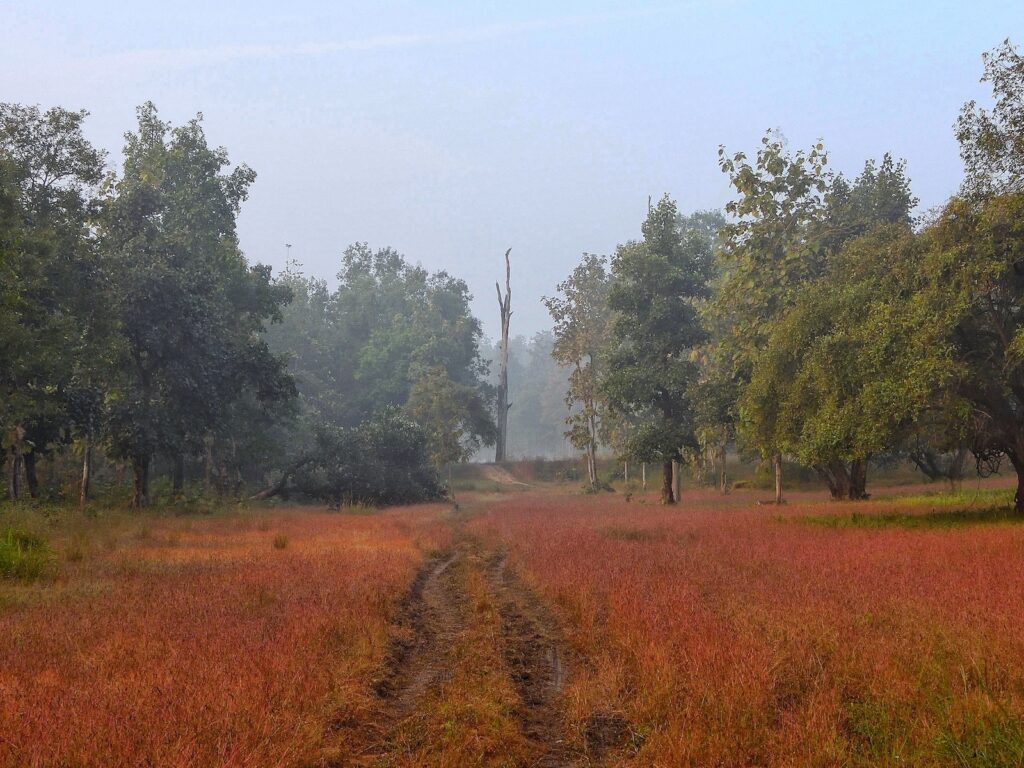
Beautiful forests of Satpura
Satpura Tiger Reserve is in Madhya Pradesh. Along with Kanha, Pench and Melghat, Satpura serves as a crucial corridor providing unbroken forest tracts and thus fostering a healthy tiger population in Central India. It is a four hour drive from Bhopal and five from Nagpur. The region is known as the Satpura Maikal Landscape or the Central Indian Highlands and the forests are primarily tropical and sub-tropical dry deciduous broadleaf.
Like all other national parks in India, Satpura too is closed during the monsoon – July 1 to September 30. The unique feature of Satpura is the Denwa river. This river demarcates the tiger reserve’s core from the buffer region. Simply put, timber (and other non-timber forest produce) collection, farming and human settlements are not allowed in the core forest of a tiger reserve. On the other hand, the buffer region allows for such activities and humans share space with wildlife.
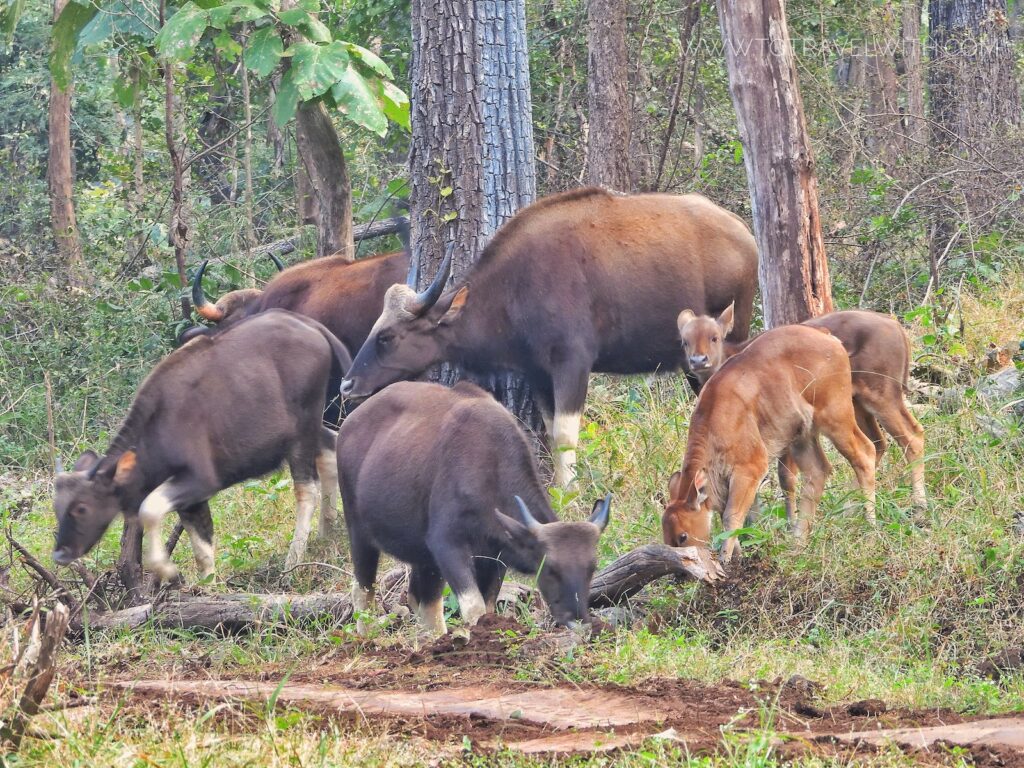
Gaur or Indian Bison
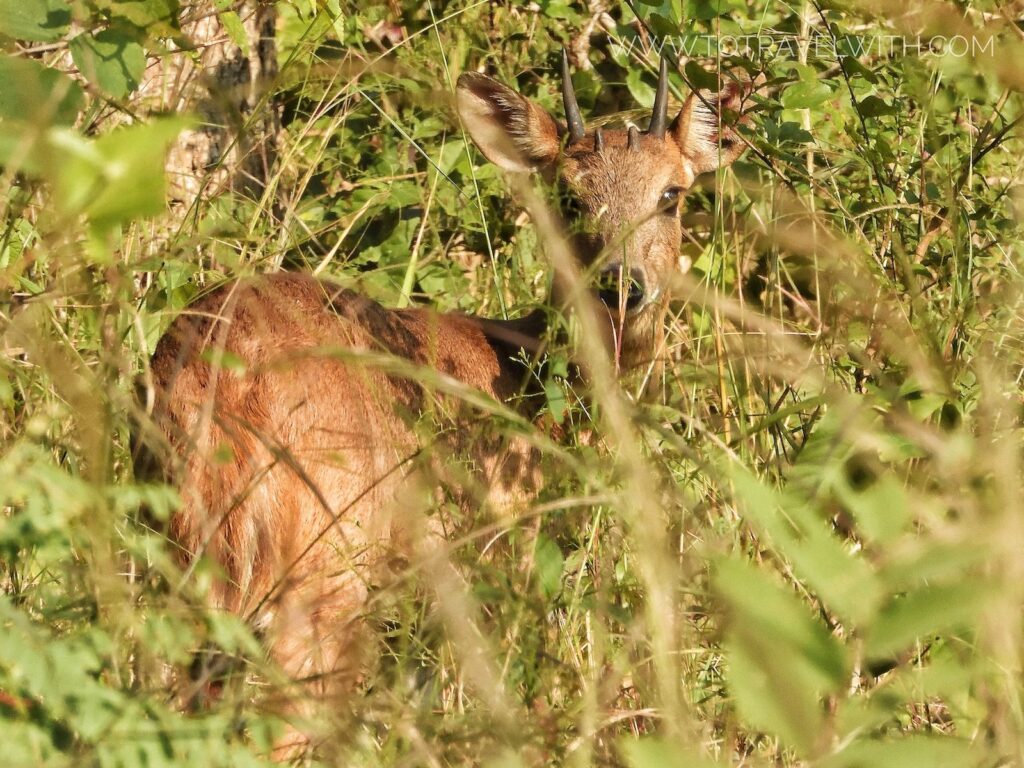
Four Horned Antelope
To get to the core part of the forest or the Madhai gate one has to cross the river by a motor boat operated by the Forest department. It is the Madhai gate from which the jungle drives commence. These boats are replaced by vehicles when the river dries up (summer).
Unlike other national parks, Satpura has several activities for visitors besides jungle drives. You can go on a canoe (with a guide) and explore the forest from the backwaters of the Denwa River. You can also go on a motor boat which covers more distance but does not give you access to the narrow backwaters.
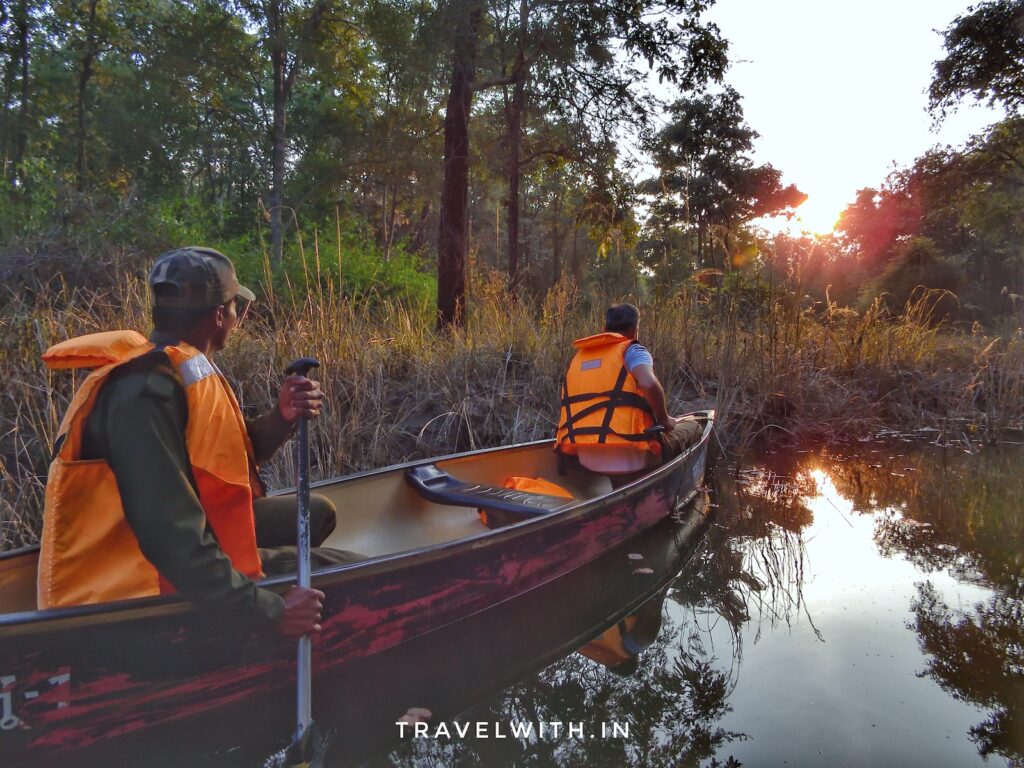
Canoeing in Satpura Tiger Reserve
Canoe Safari – Satpura
During the canoe safari you cruise along the quiet backwaters and wildlife sightings are very rewarding as you get to see them up-close. The suspense is never-ending and prolonged even more when you hear an alarm call from a deer indicating the presence of a predator near by. This was indeed the highlight of this lesser known destination.
Satpura Tiger Reserve also gives visitors the rare opportunity to see the forest on foot. Yes, instead of a gypsy you will be walking in the core forest with forest guards. The walking safari is a great opportunity to focus on the smaller and/or lesser known aspects of the forest – flora, insects, birds etc. which are often overlooked when in a vehicle. This experience is 2X more enriching when you are accompanied by an experienced naturalist – one who knows the forest and can share relevant facts. During my visit, we were accompanied by a naturalist from the Reni Pani Jungle Lodge. The expert commentary and breakfast overlooking the Denwa was the other highlight (the first being the canoe safari) of Satpura.
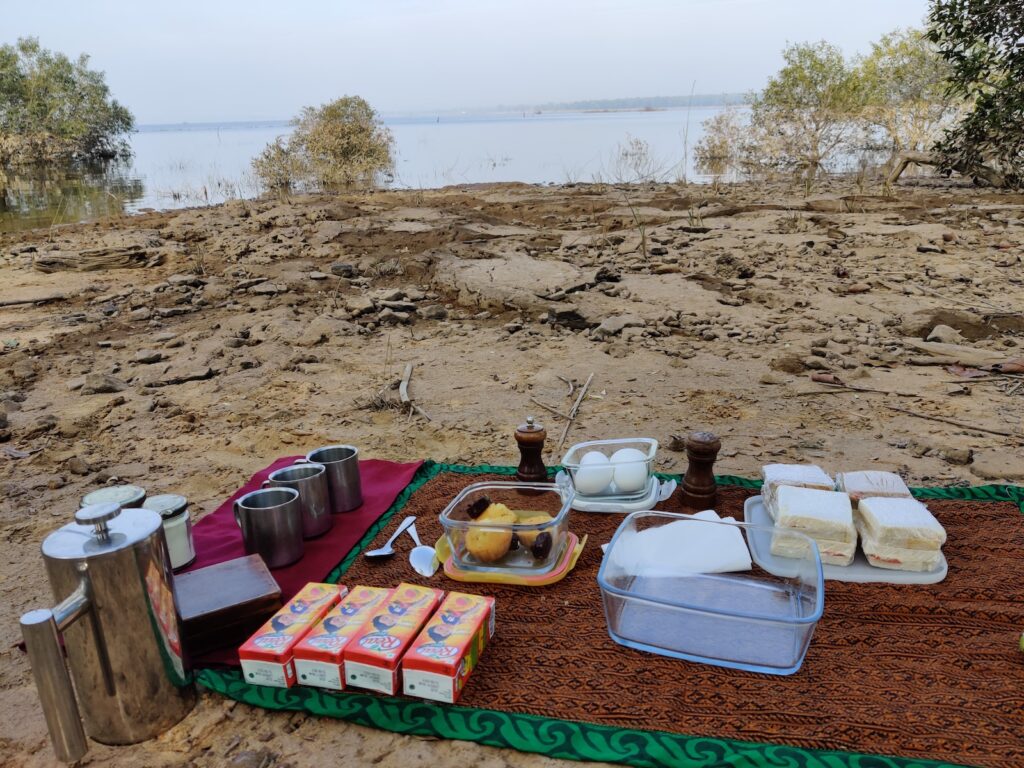
Breakfast break during the walking safari
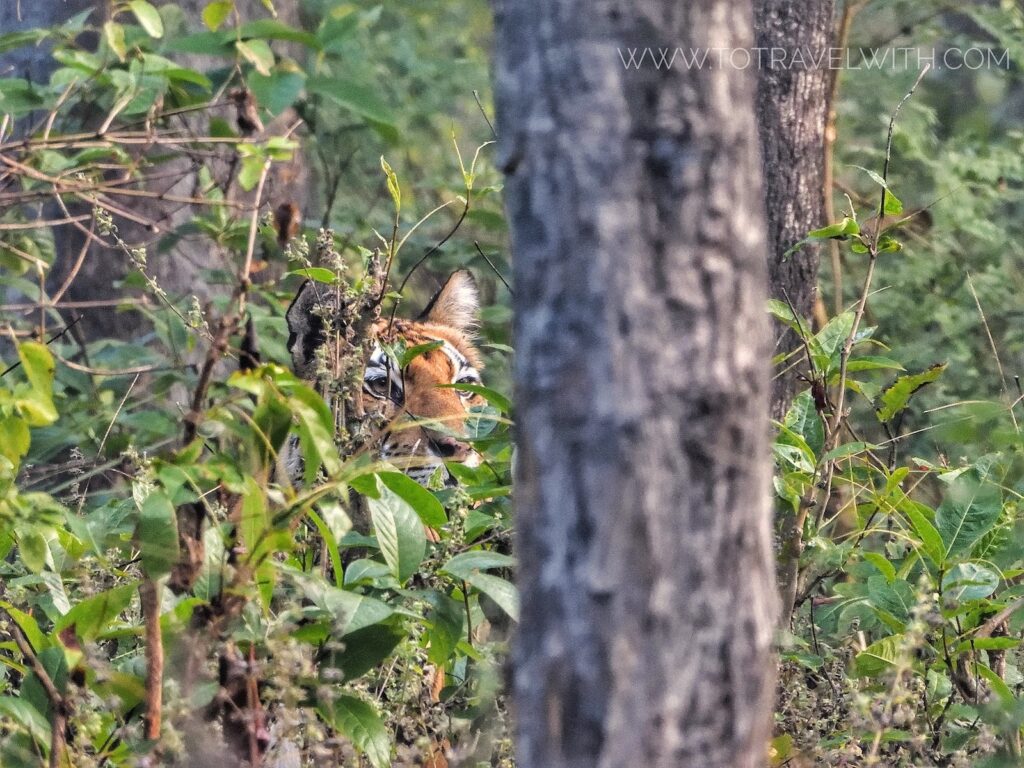
Tiger in Satpura’s Churna Range
If you’re interested in a very basic wilderness experience you can stay at the Churna Forest Rest House after entering from the Madhai gate. Churna range is deep inside the tiger reserve and an overnight stay is possible after getting permission from the Forest Department. You can also do a full day safari in Churna if an overnight stay in the rest house is not possible. The forest rest house is very basic and not equipped with any form of luxury. Electricity is solar powered and there is no cell phone network. Payment for a room can be made in cash and rooms cost from INR 2,000 to 3,000 per night excluding food. As there are only four rooms in the rest house, advance booking is highly recommended.
On the way in or out of Satpura you should definitely visit Bhimbetka rock shelters – a UNESCO world heritage site. The rock shelters are on the way to the tiger reserve and claim to be the earliest traces of human settlement in India. Some of the pre-historic cave paintings pre-date to 10,000 BC. There are 15 caves which can be visited, each one with stunning paintings depicting life as it was back then. The way to some of the caves has been made accessible for the disabled which is a huge plus point given how remote and off-the-beaten path this archaeological site is.
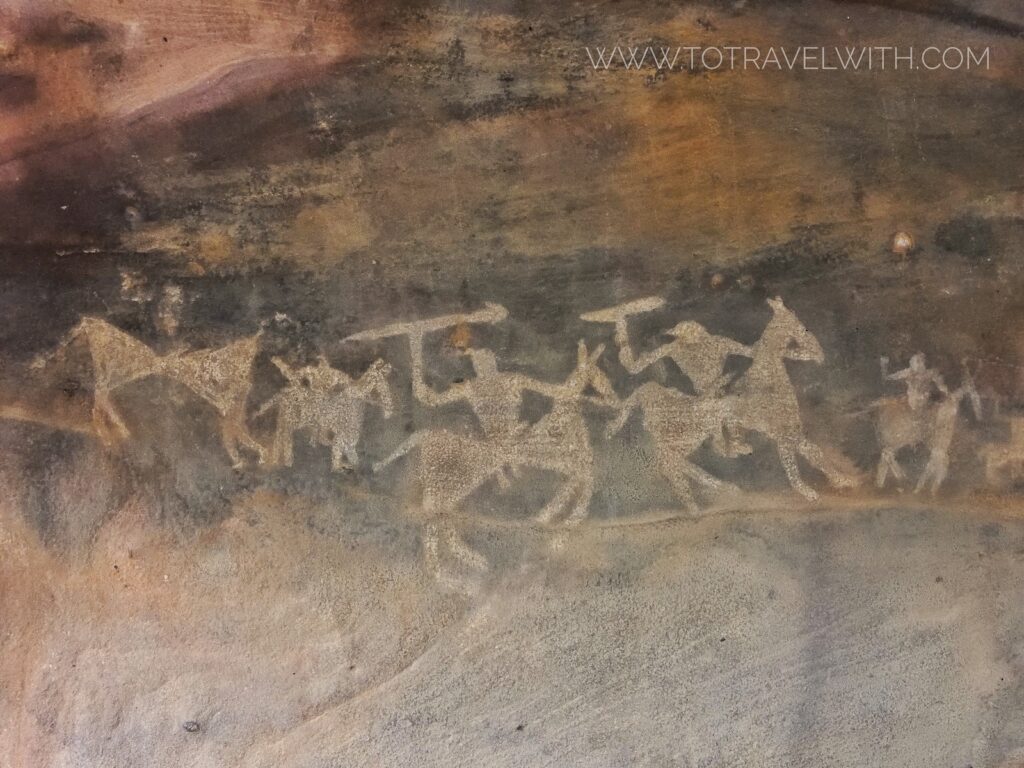
Bhimbetka Cave Paintings
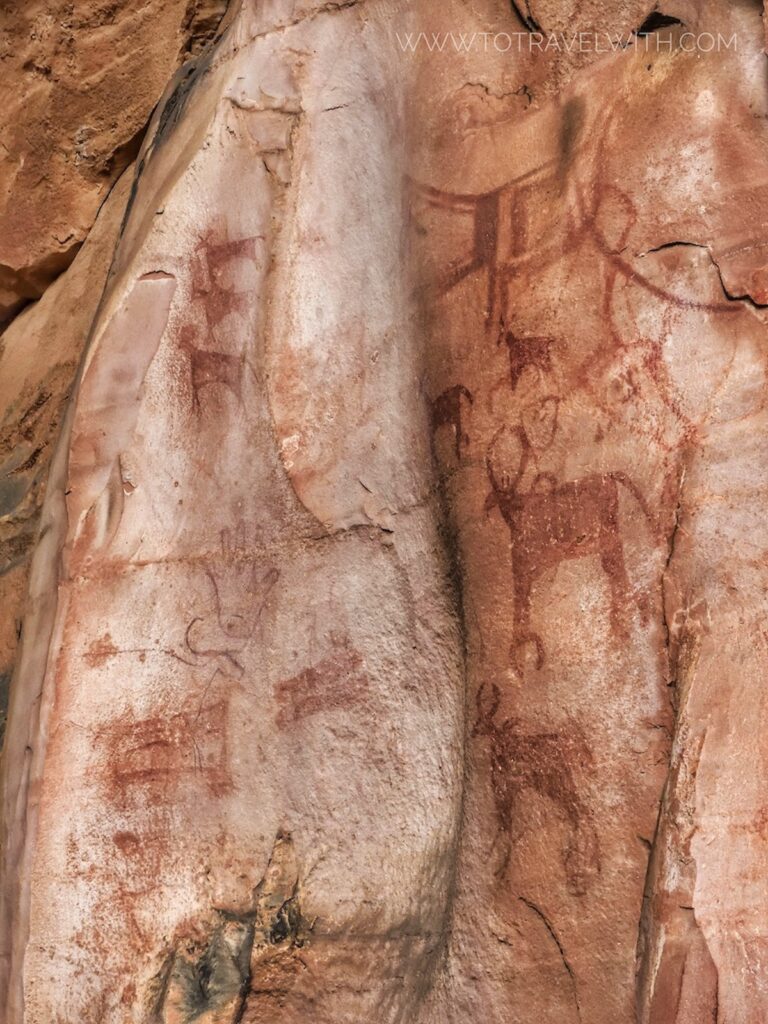
Cave painting with a child’s hand
The most remarkable cave painting is one with an imprint of a child’s hand. The cave paintings are done not only in white and red color but also yellow and green. Some of the cave paintings show that elephants and wild buffalos existed in Central India. The wild buffalo’s range is limited now only to Assam and a handful in Chhattisgarh. Other paintings depict scenes from hunting, farming, processions and ritualistic dancing.
The cave paintings are preserved by the Archaeological Survey of India (ASI). There are guards patrolling and barricades have been set up at each cave to prevent people from touching and writing on them. The area is still very remote and it is believed that there are several other unexplored caves hidden in the undergrowth. During one of the excavations, a team found a well preserved human skeleton and tools which can be seen in a museum in Bhopal. While exploring Bhimbetka you can’t help but imagine what life must have been 10,000 years ago. Thankfully, we are able to catch a glimpse of this life as it was through these cave paintings.
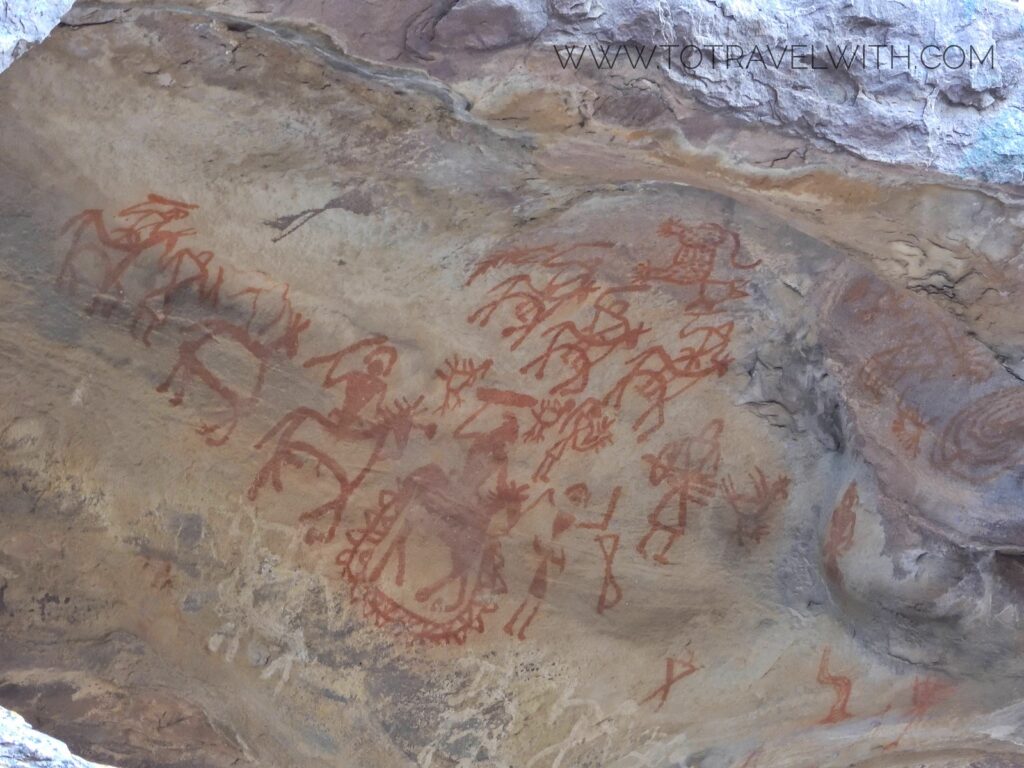
Hunting Procession
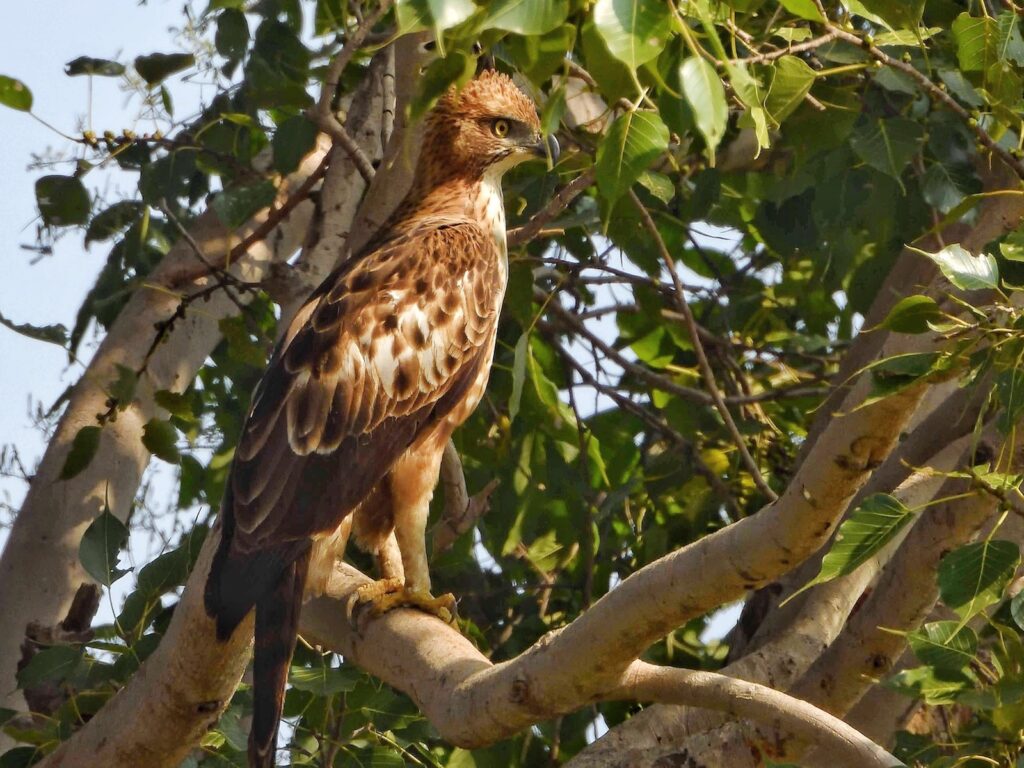
Crested Hawk Eagle
Itineraries normally include the following (but can be further customized):
• Day 1: Morning flight to Bhopal. Guided tour of Bhimbetka cave paintings. Check in to jungle lodge in Satpura. Night drive in the buffer zone.
• Day 2: Two wilderness activities – one in the morning and one in the afternoon. This can be either a jeep safari, boat ride, canoe or walking safari
• Day 3: Morning wilderness activity. Drive to Bhopal airport for evening flight back to your onward destination.
Please note that all wildlife experiences above are subject to availability as they are permitted by the Forest Department. Sometimes, some activities are not operational, so it is recommended to check with us while you are planning your holiday to Satpura.
Please Note:
• There is no guarantee that you will see the above wildlife. The river and / or sanctuary is their habitat and sightings depend on water level in the river, human interference, weather conditions, migratory pattern of birds, most of which are beyond your and my control. I will do my best to show you all there is to see.
• What to carry: copy of identification card, camera, binoculars, warm jacket (in the winter), small backpack, sun glasses, cap, vizer, sun block, cash (there are no ATMs near by), drinking water, re-fillable water bottle, preferred snacks and medicines.
• Smoking and drinking alcohol is not permitted in National Parks and Wildlife Sanctuaries.
• Please do not throw trash on the floor even if you don’t see a trash can. Please ask your naturalist who will help to dispose it off properly.
• To prevent any disturbance to wildlife, we do not encourage the use of recorded call playback to attract birds for photography, feeding, painting or baiting of wildlife.


